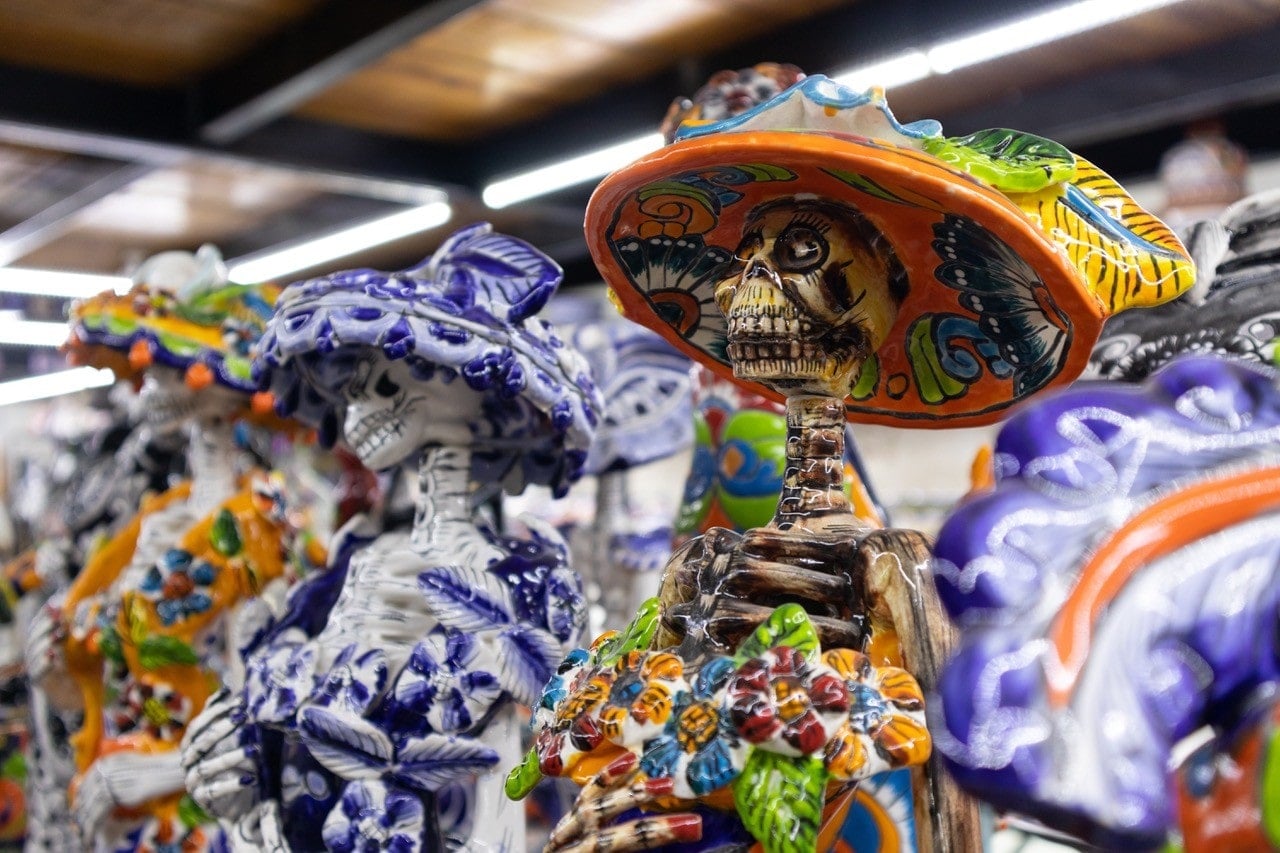History

History
Talavera, the art that survives the passage of time
By Gretel Morales - 2022-09-06T17:16:35Z
We all know the art of talavera. It is the colorful pattern that adorns plates, cups, and vases, usually in blue, although it can vary. Talavera tableware are precious jewels that embellish tables in homes and restaurants on occasions, especially during national holidays, though it is not limited to this month.
We tend to assume that talavera is 100% Mexican and that it is only produced by artisans from Puebla and Tlaxcala, but in reality, it arrived in Mexico after colonization. The traditional technique emerged in the mid-16th century and is still alive thanks to talented artisans.
Although today we can find tableware made from all materials and price ranges, talavera has become a living form of art that has transcended time, as in 2019, UNESCO declared talavera produced in Mexico and Spain as Intangible Cultural Heritage of Humanity. If you want to learn more about talavera, don't miss this note from kiwilimón!
You can also read: Love at the center of the table: the importance of tableware
In Mexico, authentic talavera has been protected by a denomination of origin since 1995, so if you are looking for one of these pieces, make sure it comes from San Pablo del Monte, Tlaxcala, and Atlixco, Puebla, Cholula, and Tecali de Herrera, in the state of Puebla.
One of the most impressive examples of talavera is the famous Casa de los Azulejos, located in Mexico City, but in addition to tiles, talavera is also found in all types of utensils such as plates, cups, vases, pots, and more.

You can also read: Anfora, a hundred years on your dining table
In addition to being a source of income for small communities, talavera is also a highly demanding type of art, as “the knowledge and skills related to the cultural practice include the preparation of clay, the making of pottery, decoration, the preparation of pigments naturally, and the management of the kiln, which requires great expertise.”
Although today mole poblano and chiles en nogada are served on beautiful talavera platters, the Ministry of Culture explains that this type of ceramics has its origins in Egypt and Persia, then arriving in Morocco and finally in Spain. Once talavera reached Europe, it was influenced by techniques from Italy, Holland, and Portugal. Thus, in the end, talavera is the perfect example of cultural exchange, just like many jewels of Mexican cuisine.
You can also read: How to clean porcelain tableware
We tend to assume that talavera is 100% Mexican and that it is only produced by artisans from Puebla and Tlaxcala, but in reality, it arrived in Mexico after colonization. The traditional technique emerged in the mid-16th century and is still alive thanks to talented artisans.
Although today we can find tableware made from all materials and price ranges, talavera has become a living form of art that has transcended time, as in 2019, UNESCO declared talavera produced in Mexico and Spain as Intangible Cultural Heritage of Humanity. If you want to learn more about talavera, don't miss this note from kiwilimón!
You can also read: Love at the center of the table: the importance of tableware
What is talavera?
According to information published by the Ministry of Economy, talavera is a type of pottery whose “manufacture dates back to the 16th century. The colors used in its decoration are blue, yellow, black, green, orange, and mauve. Each piece is handmade on a wheel, and the glazing contains tin and lead, as they have been made since the colonial era.”In Mexico, authentic talavera has been protected by a denomination of origin since 1995, so if you are looking for one of these pieces, make sure it comes from San Pablo del Monte, Tlaxcala, and Atlixco, Puebla, Cholula, and Tecali de Herrera, in the state of Puebla.
One of the most impressive examples of talavera is the famous Casa de los Azulejos, located in Mexico City, but in addition to tiles, talavera is also found in all types of utensils such as plates, cups, vases, pots, and more.

You can also read: Anfora, a hundred years on your dining table
Talavera, a heritage of humanity
In 2019, UNESCO recognized Mexican and Spanish talavera as part of the cultural heritage of humanity, due to the fact that its creation involves “knowledge transmitted from generation to generation, that has persisted in a specific community, identifying them as part of their heritage and identity.”In addition to being a source of income for small communities, talavera is also a highly demanding type of art, as “the knowledge and skills related to the cultural practice include the preparation of clay, the making of pottery, decoration, the preparation of pigments naturally, and the management of the kiln, which requires great expertise.”
Although today mole poblano and chiles en nogada are served on beautiful talavera platters, the Ministry of Culture explains that this type of ceramics has its origins in Egypt and Persia, then arriving in Morocco and finally in Spain. Once talavera reached Europe, it was influenced by techniques from Italy, Holland, and Portugal. Thus, in the end, talavera is the perfect example of cultural exchange, just like many jewels of Mexican cuisine.
You can also read: How to clean porcelain tableware









